
Project URL in R:
Customer_Lifetime_Value_Analysis.notbeook-in-R.html
Tools used:
RStudio, Microsoft Excel, Power Query, Tableau
Section 1: Introduction to the project
Problem description
Customer retention is a key challenge for businesses, and understanding the lifetime value of customers (Customer Lifetime Value, CLV) is crucial for developing effective retention and growth strategies.
IBM Watson Analytics company wants to make informed decisions about customer acquisition, retention, and development to optimize resources and maximize profitability.
Business Objective
"Create a predictive model that considers the provided demographic and purchasing behavior data to estimate the Customer Lifetime Value, and improve customer retention programs."

Sección 2: Data Description
Features to be provided for model development
For the project, historical data was provided in a .csv file with 24 columns and 9134 observations. This file contains various demographic characteristics, behavior, policy information, and vehicle details of the customers.
| Columna | Type of data | Subtype of data | Ranges o Categories |
|---|---|---|---|
| 1. Customer | Categorical | Nominal | ID de 7 caracteres que combina números y letras |
| 2. State | Categorical | Nominal | Arizona, California, Nevada, Oregon, Washington |
| 3. Customer Lifetime Value | Numerical | Continuous | 1,898.00 a 83,325.38 |
| 4. Response | Categorical | Nominal | Yes, No |
| 5. Coverage | Categorical | Ordinal | Basic, Extended, Premium |
| 6. Education | Categorical | Ordinal | Bachelor, College, Doctor, High School or Below, Master |
| 7. Effective to date | Numerical | Discrete | 1/1/2011 a 2/28/2011 |
| 8. Employment Status | Categorical | Nominal | Disabled, Employed, Medical Leave, Retired, Unemployed |
| 9. Gender | Categorical | Nominal | F, M |
| 10. Income | Numerical | Continuous | 0 a 99981 |
| 11. Location code | Categorical | Nominal | Rural, Suburban, Urban |
| 12. Marital Status | Categorical | Nominal | Divorced, Married, Single |
| 13. Monthly Premium Auto | Numerical | Continuous | 61 a 298 |
| 14. Months Since Last Claim | Numerical | Discrete | 0 a 35 |
| 15. Months Since Policy Inception | Numerical | Discrete | 0 a 99 |
| 16. Number of Open Complaints | Numerical | Discrete | 0 a 5 |
| 17. Number of Policies | Numerical | Discrete | 1 a 9 |
| 18. Policy type | Categorical | Nominal | Corporate Auto, Personal Auto, Special Auto |
| 19. Policy | Categorical | Nominal | Corporate L1, Corporate L2, Corporate L3, Personal L1, Personal L2, Personal L3, Special L1, Special L2, Special L3 |
| 20. Renew Offer Type | Categorical | Nominal | Offer1, Offer2, Offer3, Offer4 |
| 21. Sales channel | Categorical | Nominal | Agent, Branch, Call Center, Web |
| 22. Total Claim Amount | Numerical | Continuous | 0.099007 a 2893.239678 |
| 23. Vehicle Class | Categorical | Nominal | Four-Door Car, Luxury Car, Luxury SUV, Sports Car, SUV, Two-Door Car |
| 24. Vehicle Size | Categorical | Ordinal | Large, Medsize, Small |
Sección 3: Findings - Exploratory Data Analysis
Coverage vs CLV
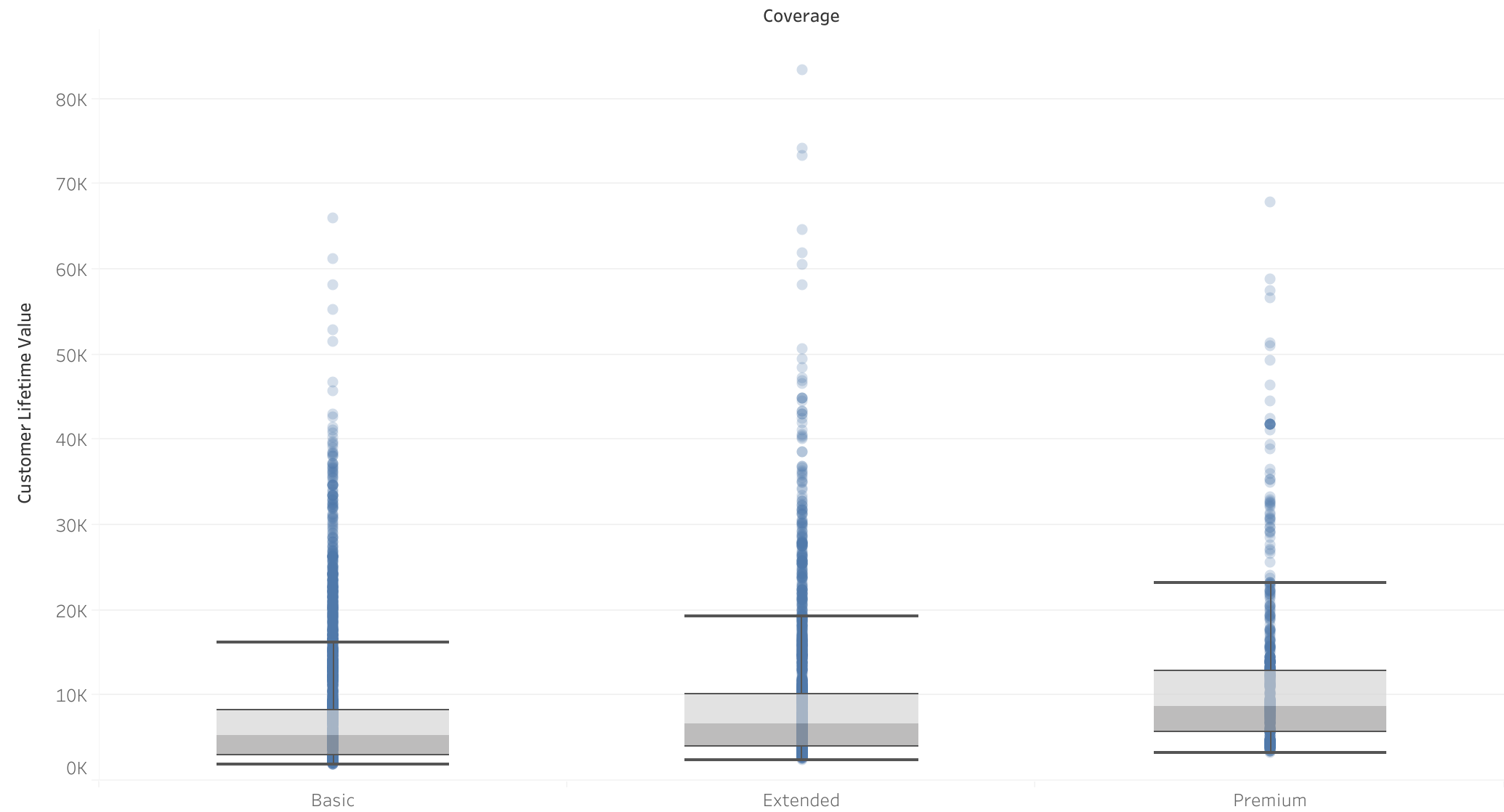
- Correlation between coverage and CLV There is a positive correlation between premium coverage and CLV, as evidenced by the boxplots.
Vehicle class vs CLV
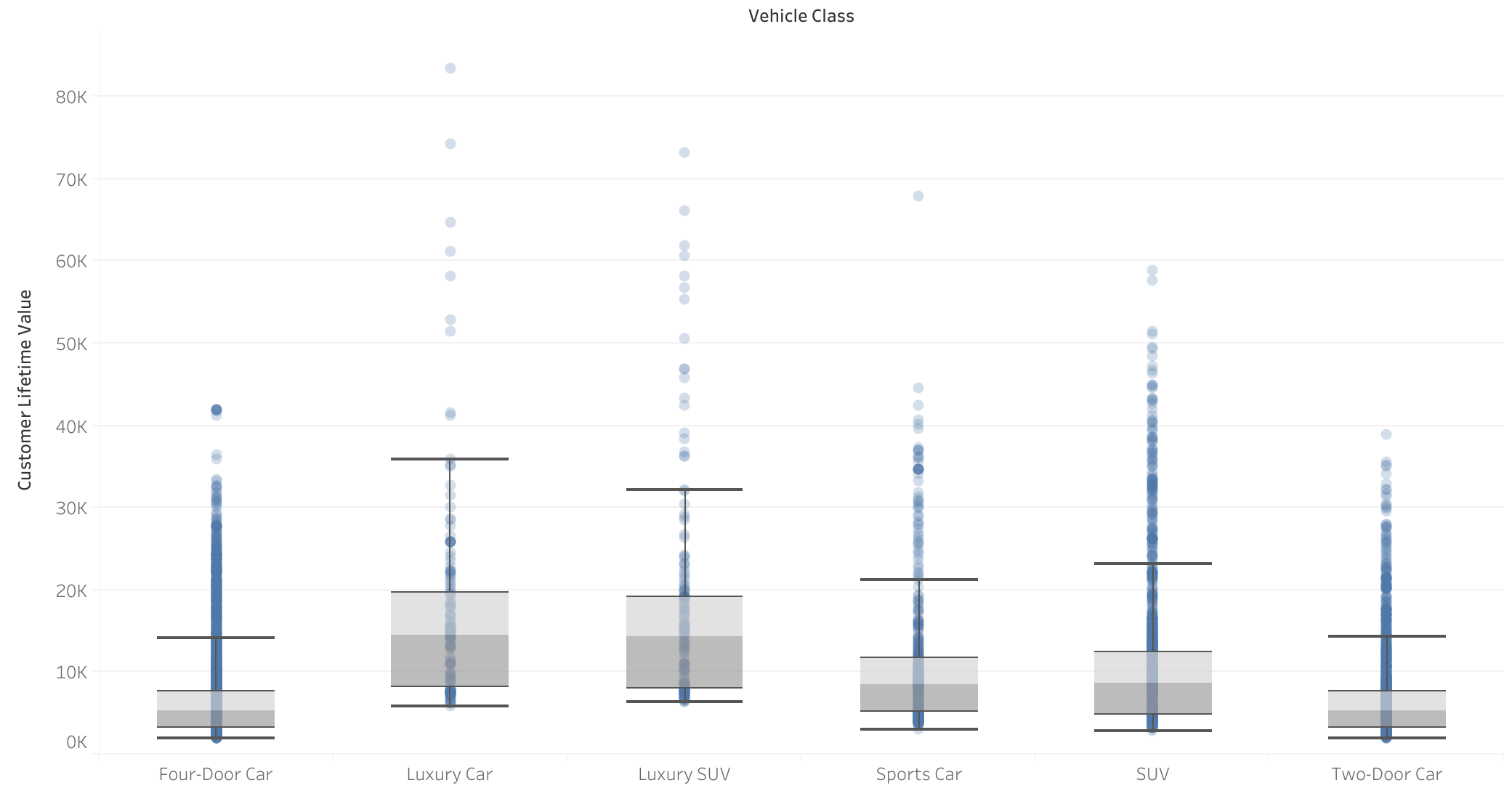
- Correlation between vehicle class and CLV Customers with luxury vehicles have a higher CLV, indicating that the vehicle class has an impact on CLV.
Monthly insurance payment vs CLV:
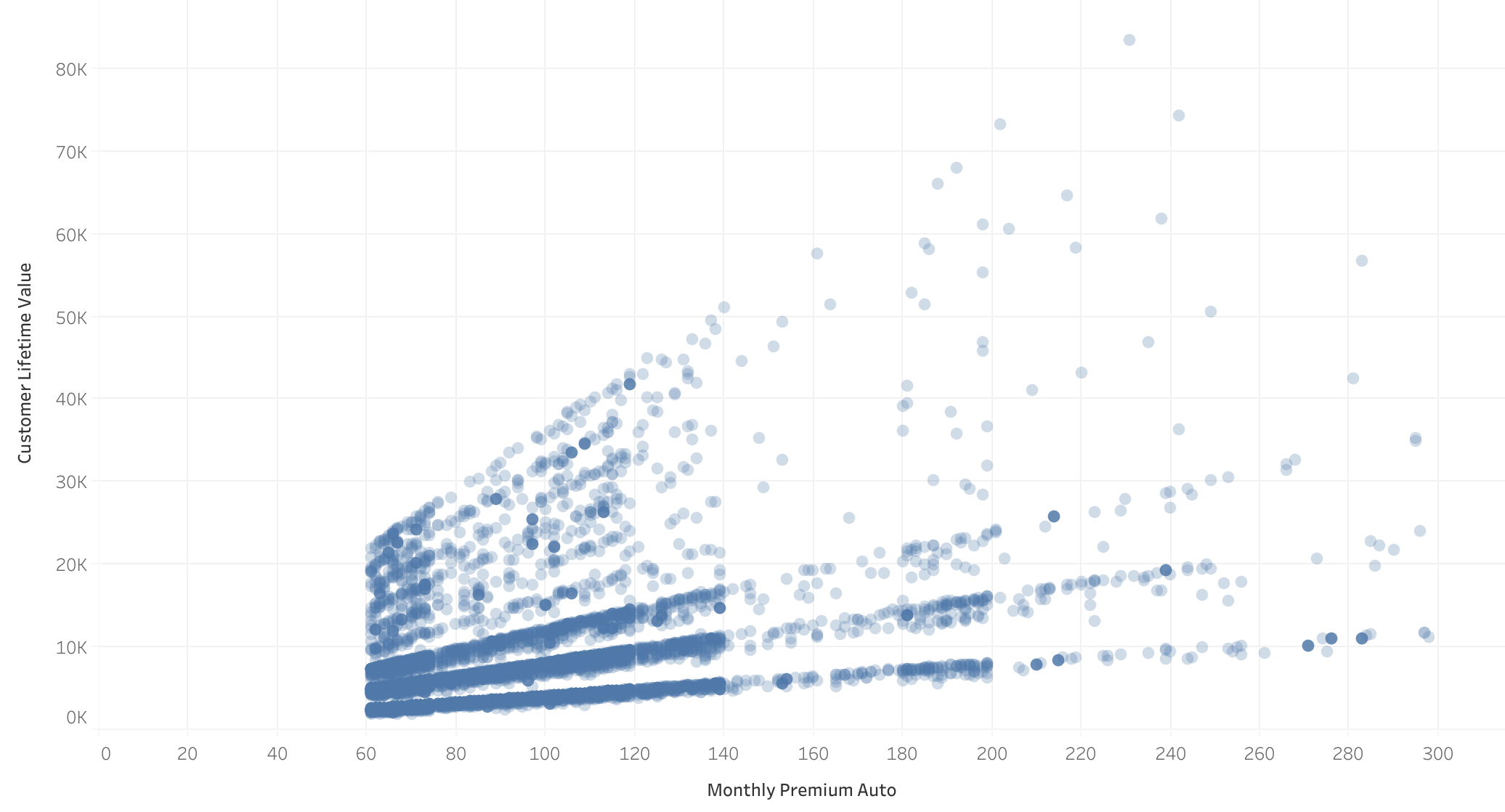
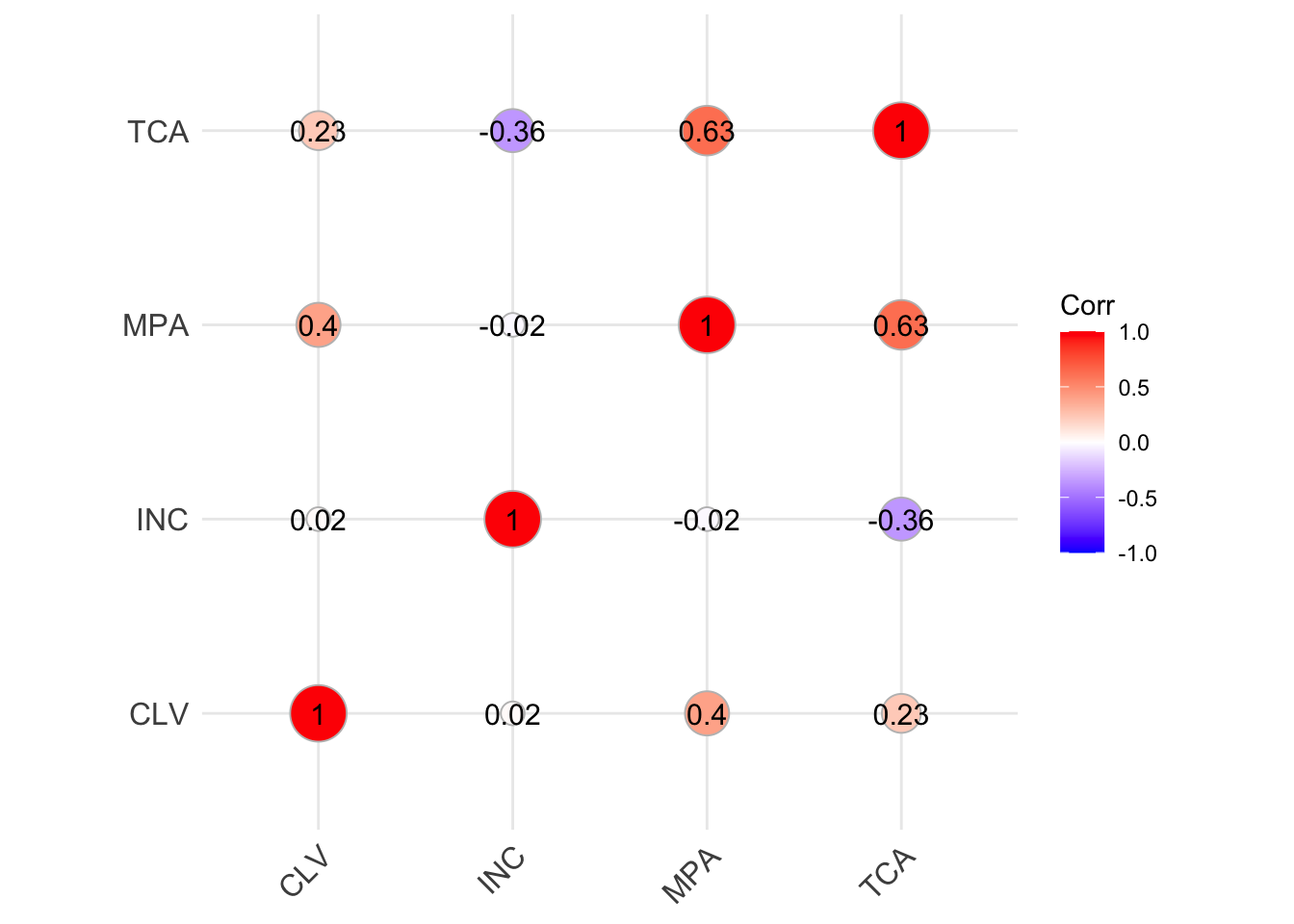
- Highest correlation with CLV: The correlation matrix shows that the monthly insurance payment has the highest numerical correlation with CLV.
- Clear trend in the scatterplot: it is observed that the higher a client's monthly payment, the higher their CLV.
Total claimed vs CLV
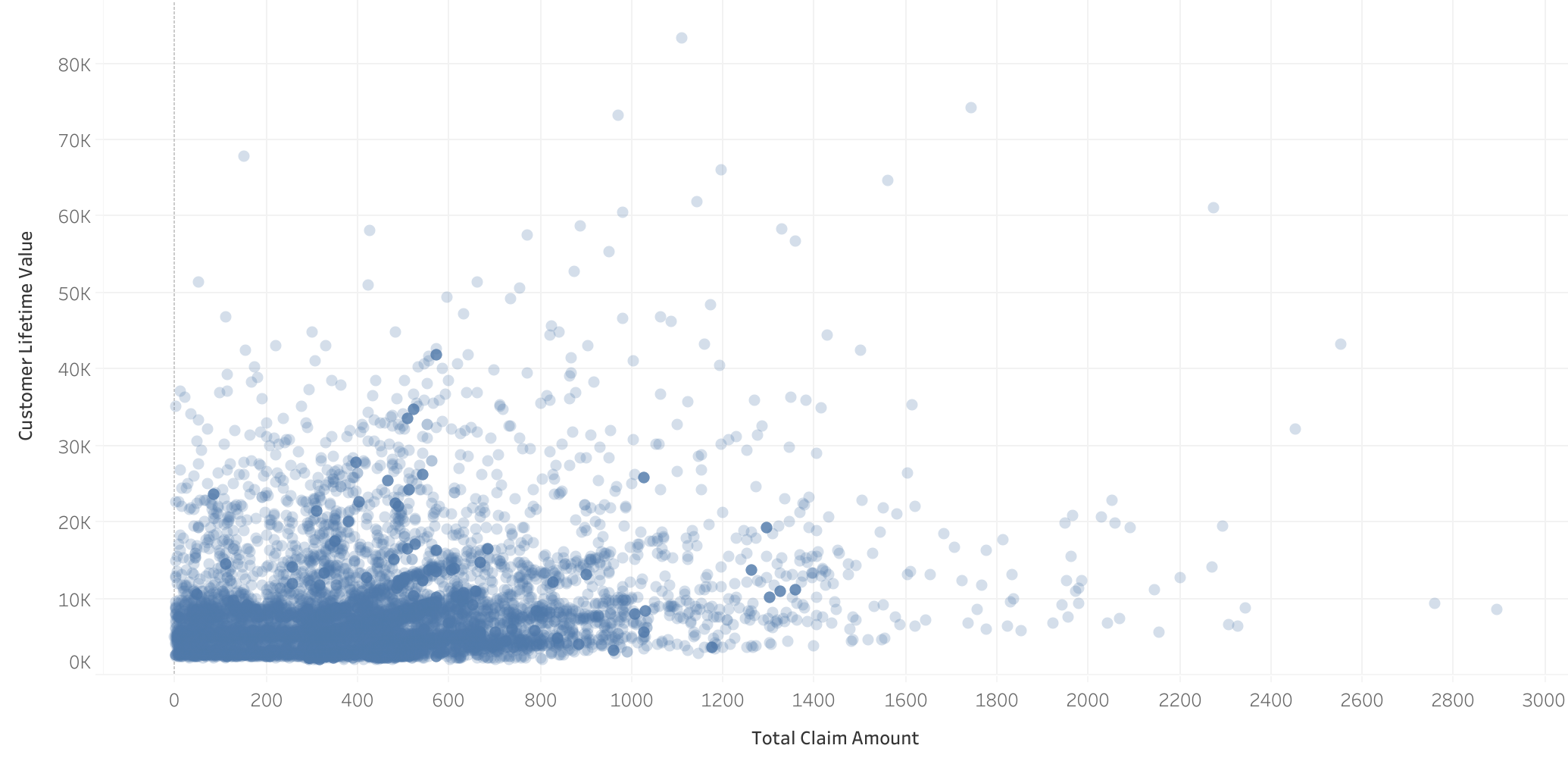
- Correlation between Total claimed and CLV: Although not as evident in the scatterplot, there is a correlation between the total claimed and CLV, corroborated by the simple linear regression model.
Number of insurances vs CLV
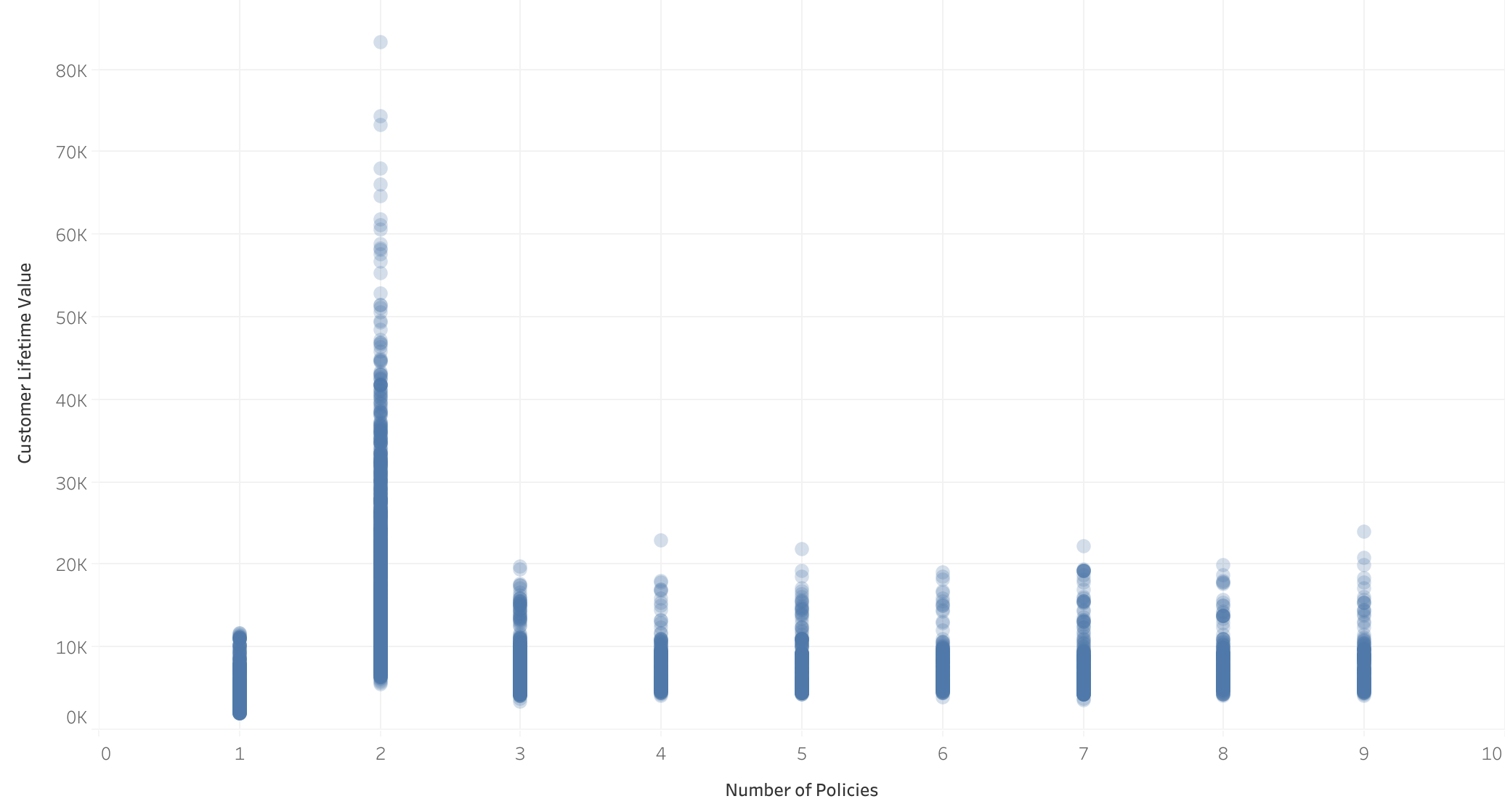
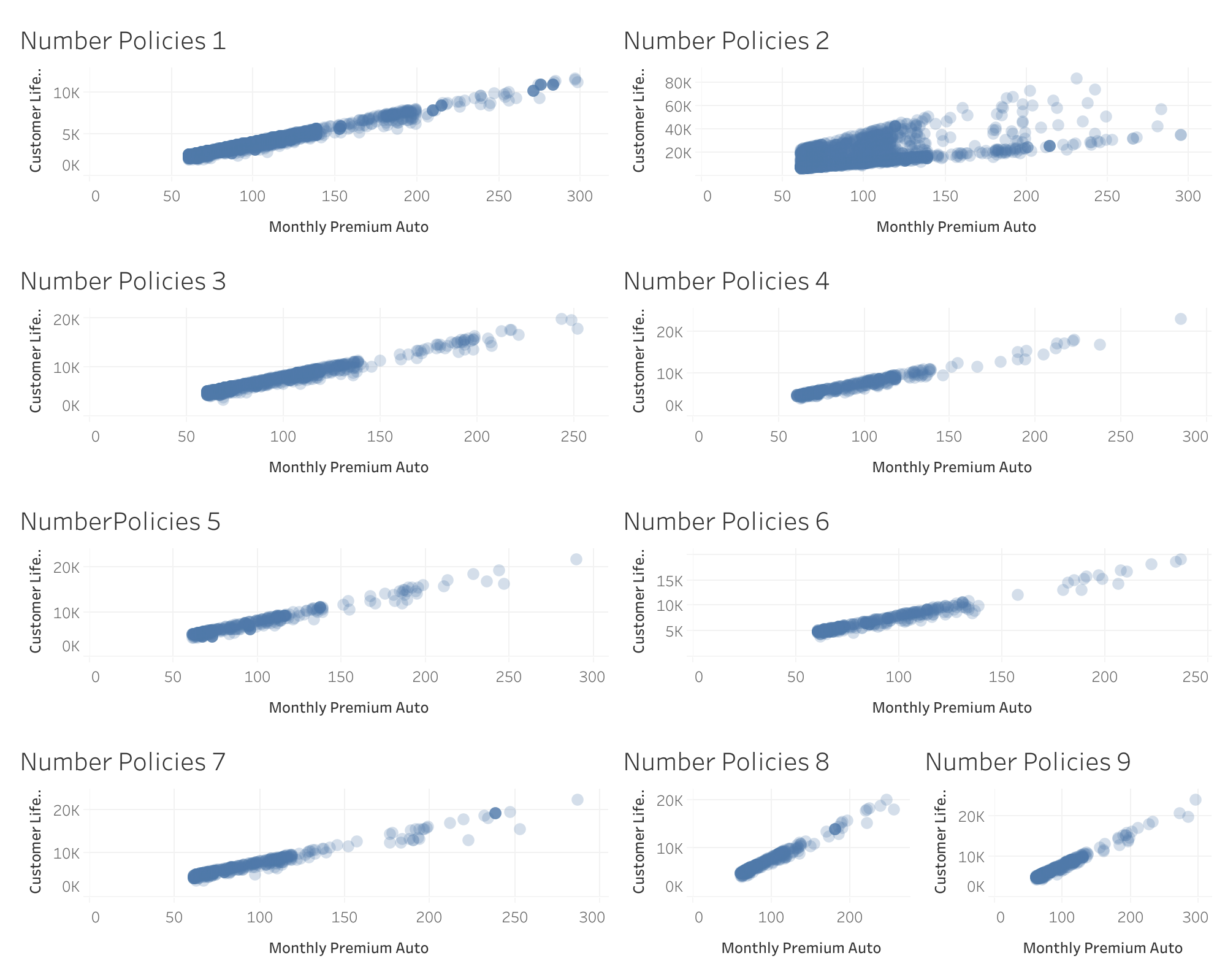
- Atypical increase in CLV for customers with 2 insurances: An unusual increase in CLV is observed for these customers.
- Loss of linearity for customers with 2 insurances: The behavior of clients without 2 insurances is linear.
Section 4: Building the model with Linear regression
Multiple linear regression
Multicollinearity
Multicollinearity was detected in some terms (VIF > 5.0).
Stepwise regression
This method was used to select variables with a greater effect and eliminate multicollinearity.

10-fold cross-validation results

Residuals absolute value VS predicted value
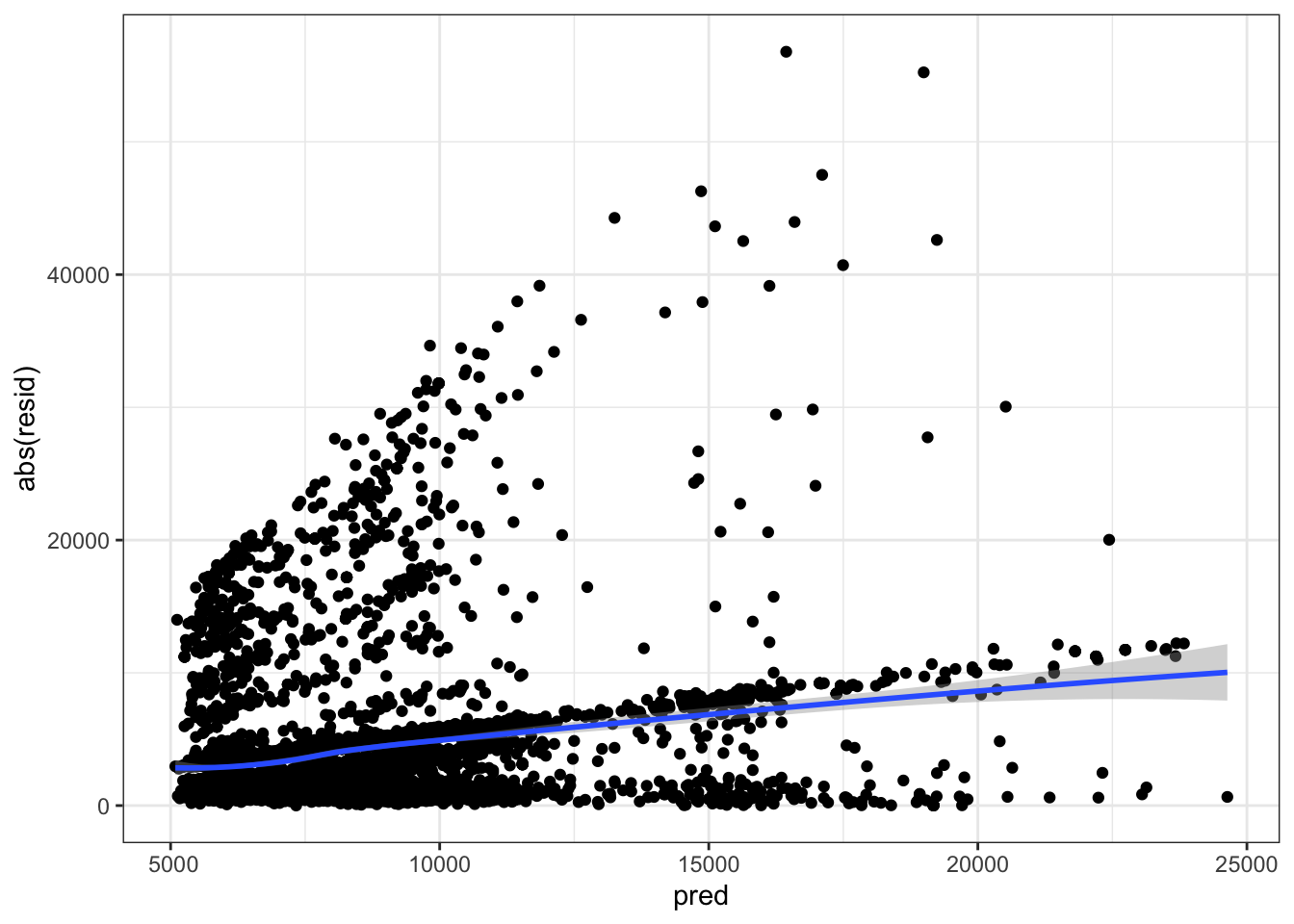
Out-of-sample performance

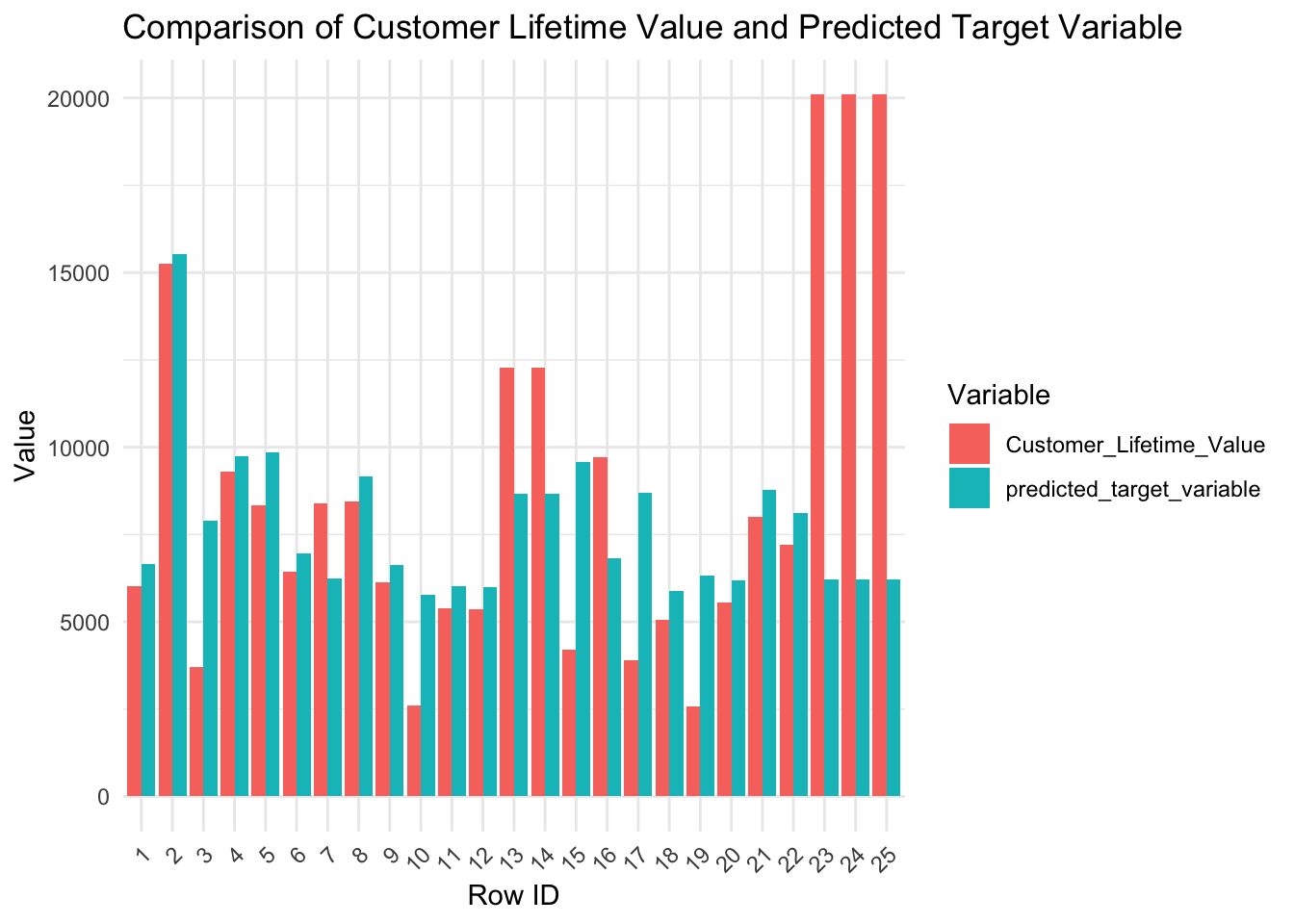
Section 5: Improving the model with KNN
K Nearest Neighbor.
Previously, We found that only when number of policies is 2 the relationship between Customer_Lifetime_Value (target value) and Monthly_Premium_Auto (a feature) vary hugely. We suspect that the model could improve it’s accuaracy by trying using an algorithm that could catch this non linear relationship.
Out-of-sample performance

Visualizing Observed vs predicted values on holdout sample
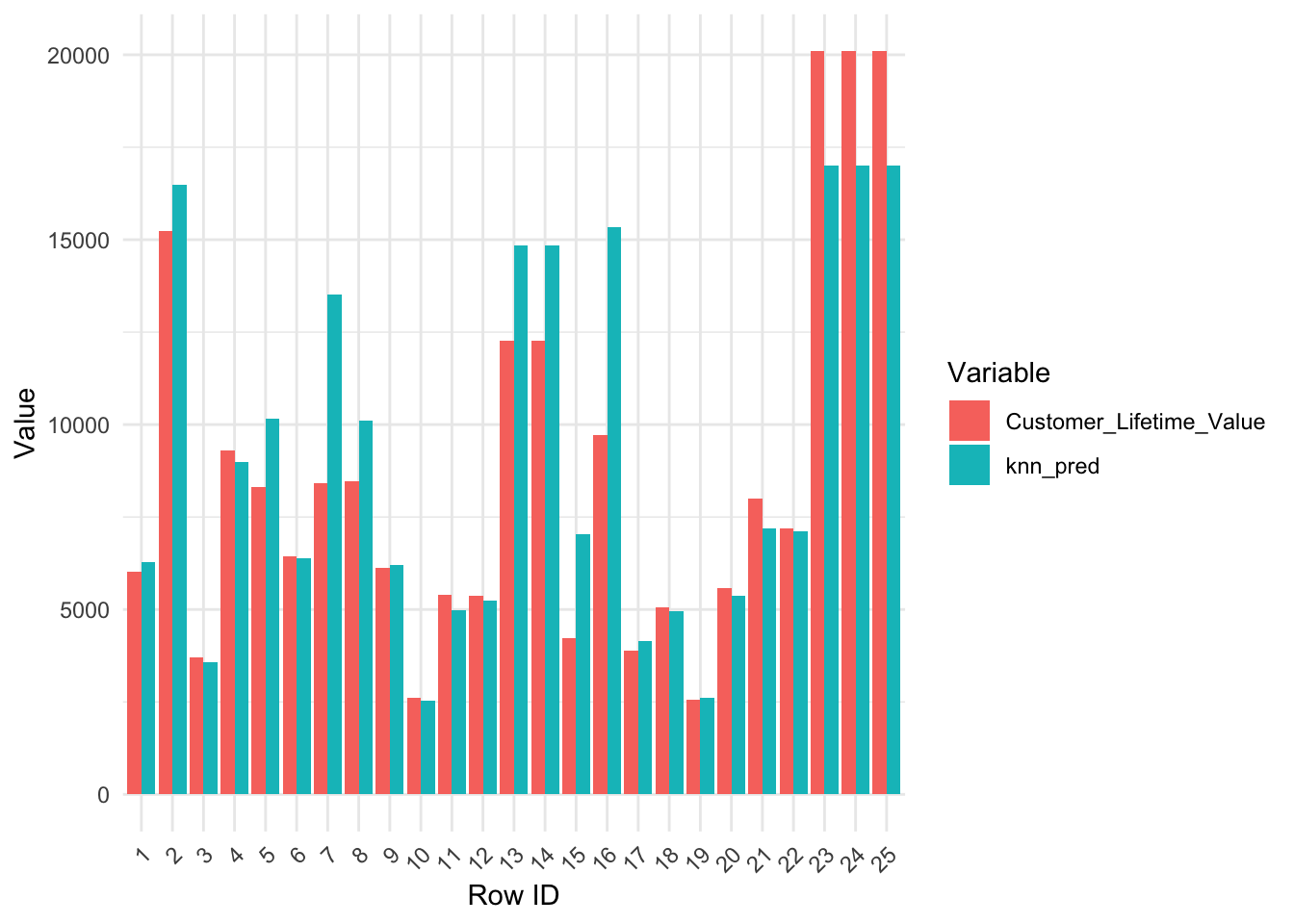
Setting KNN as feature engine
Now let’s try setting KNN as a feature and use it in the multiple linear regression model to see if that could improve the model even further.10 fold cross validation model

Assessing the model on new data (holdout sample)

Visualizing Observed vs predicted values on holdout sample
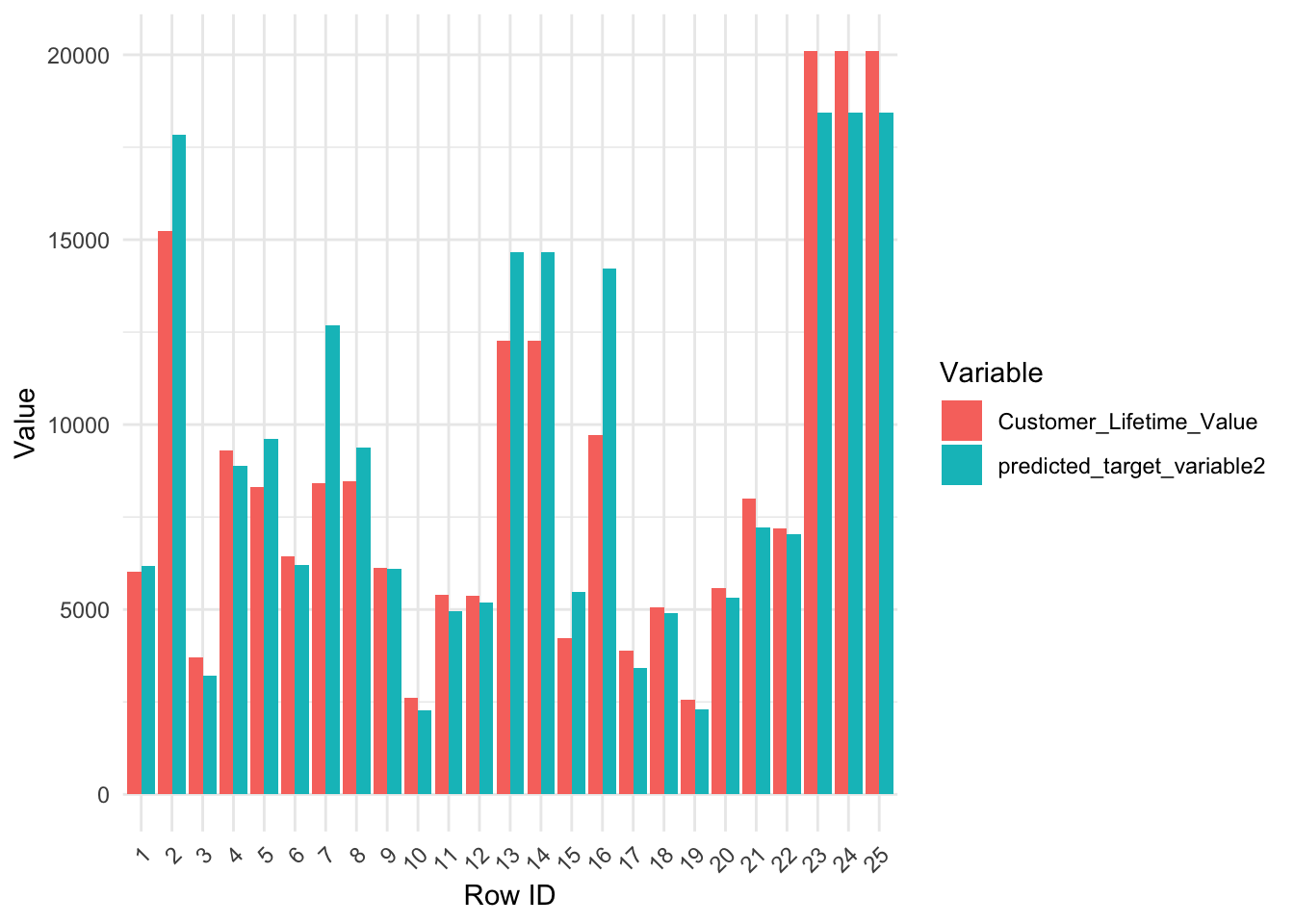
Visualizing the absolute value of the residuals vs the predicted values
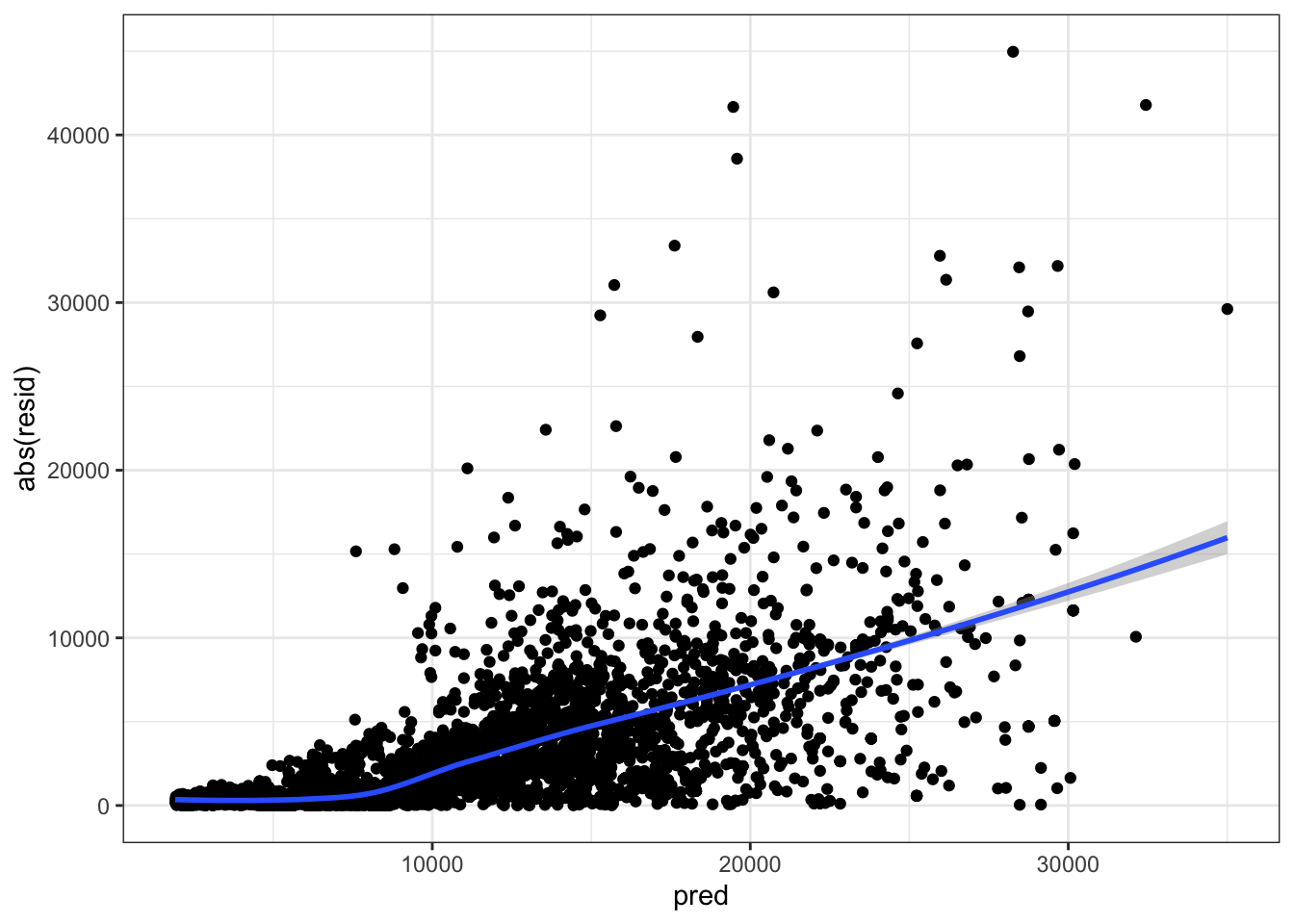
Section 6: Conclusion
Our initial linear regression model yielded an out-of-sample RMSE of 6433.889 and an R^2 of 0.1738. Although the model's precision was limited, the insights derived from the coefficients can still be used to inform business decisions aimed at increasing CLV.
The second model significantly improved upon the first by employing an ensemble approach, which incorporated the K Nearest Neighbors (KNN) result as an additional feature. The final model achieved an RMSE of 3994.279 and an R^2 of 0.6813.
The substantial improvement in our model's performance can be attributed to the detection of an unusual pattern among clients holding two policies, which our original linear regression model failed to capture. It is recommended to further investigate this behavior to identify the underlying cause, which may lead to the development of a more accurate model for predicting CLV.